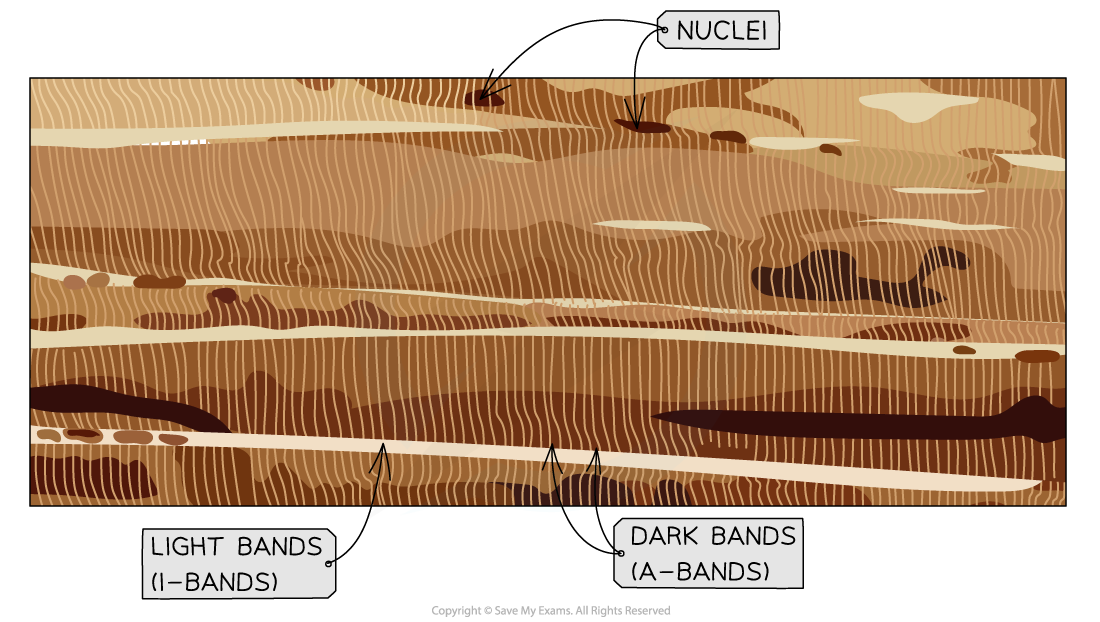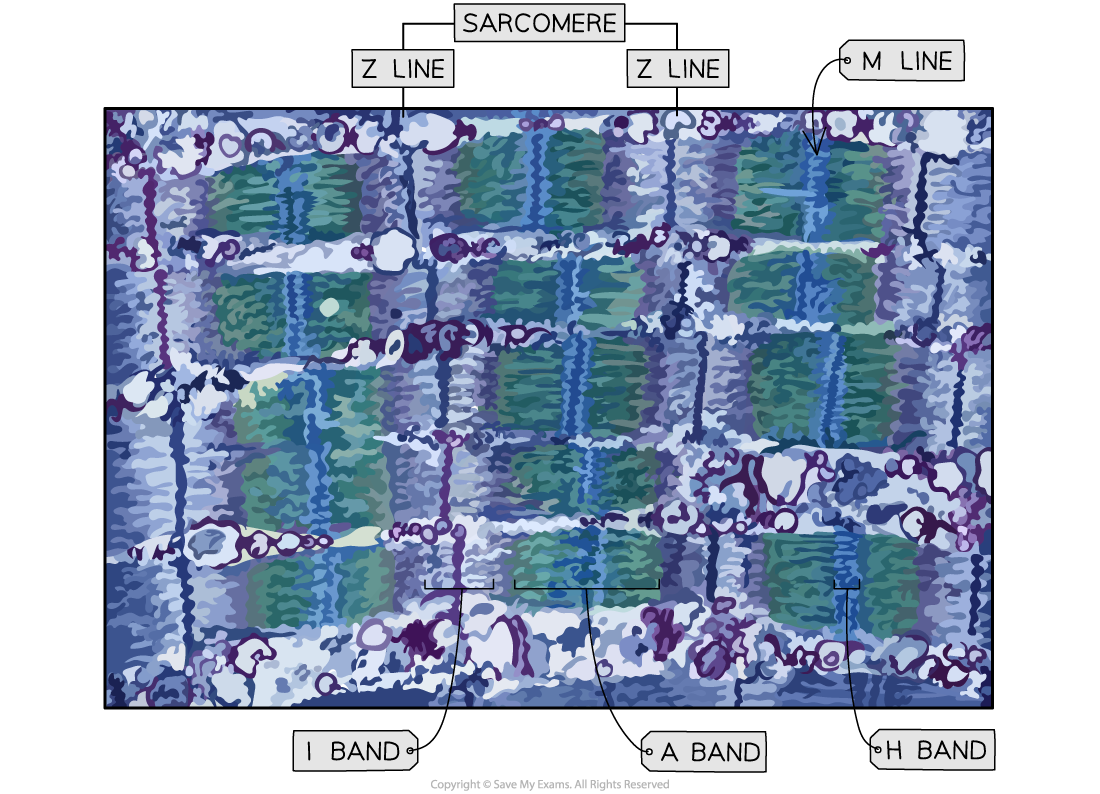Analysing Muscle Contractions in Electron Micrographs
- Many biological structures are too small to be seen by the naked eye
- Optical microscopes are an invaluable tool for scientists as they allow for tissues, cells and organelles to be seen and studied
- Electron microscopes provide a much higher magnification and resolution so sub-cellular details can be studied
- Using microscopes to calculate the size of specimens requires the use of an eyepiece graticule which should be calibrated to the microscope
- However, it can be very difficult to make out the features of skeletal muscle fibres using an optical microscope
- Only the banding is visible, this is why it is referred to as striated muscle

The dark bands produce a characteristic striped appearance under an optical microscope
- Electron microscopes are often used to see muscle fibres in more detail
- They reveal the structure of myofibrils

 The detailed structures of the muscle fibres are visible due to the much stronger magnification of the electron microscope.
The detailed structures of the muscle fibres are visible due to the much stronger magnification of the electron microscope.
In a relaxed sarcomere:
- There will be visible dark lines where the Z-lines are at either end of the sarcomere
- There will also be a darker band in the middle of the sarcomere where the thicker myosin fibres are positioned and in the very centre of that is the M line
- Around the Z-line, lighter bands are seen where the thinner actin fibres are positioned
In a contracted sarcomere:
- The Z-lines and M-lines are still visible with a shorter distance between the two z-lines
- The lighter bands around the z-line will be smaller or not visible
- The darker band will be the same size (although may appear a bit darker).
